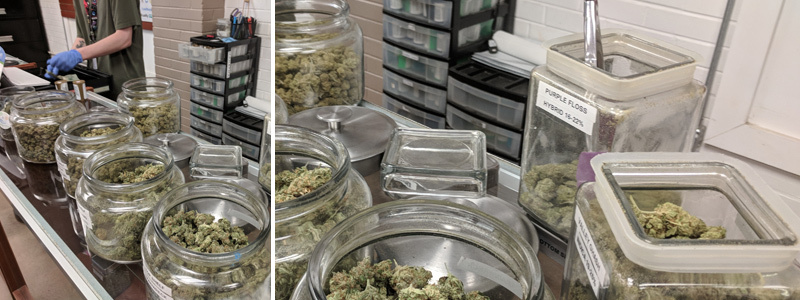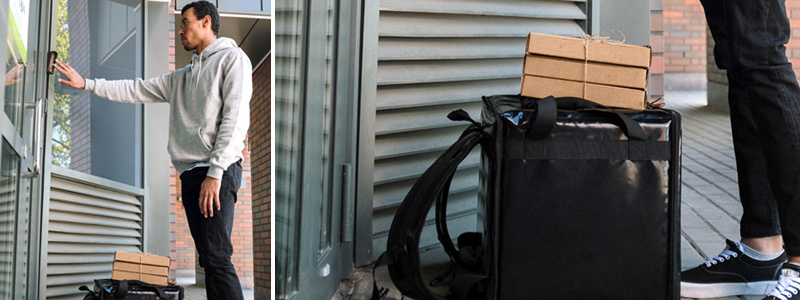
Cannabis Dispensary Delivery – 4 Challenges Facing Businesses
Cannabis dispensary delivery is breaking through as a powerful business opportunity. In 2022 in California alone, legal sales of cannabis products reached $5.3 billion, according to figures released by the California Department of Tax and Fee Administration.
Cannabis delivery software was already an important piece of delivery business for dispensaries. One expert estimated that dispensary deliveries accounted for up to 55% of California’s medical marijuana sales. Then the COVID-19 pandemic hit, making it even more important. One delivery service told the New York Times that their sales increased 500% after California issued quarantine orders.
Cannabis delivery is certainly profitable, but it’s also fraught with obstacles. Let’s take a look at some challenges distinct to dispensaries delivering cannabis.
Cannabis Delivery Services
In the cannabis industry, cannabis delivery services are a convenient and efficient way for customers to access cannabis products. These services have quickly become popular, especially in regions like California and Canada. Leveraging technology, these services rely on cannabis delivery software to streamline their operations and provide real-time solutions to both dispensaries and consumers.
A cannabis delivery service typically functions as an eCommerce platform where customers can place online orders for cannabis products. Once an order is placed, the system uses GPS tracking and route optimization to determine the most efficient delivery routes for the delivery drivers, significantly reducing delivery time.
The delivery management software acts as a delivery platform connecting dispensaries, the cannabis delivery business, and customers. This software automates the delivery process, from order management to proof of delivery, and it enables delivery drivers to use a mobile app (available for both Android and iOS) with key features such as status updates and notifications to keep customers informed about their delivery’s ETA.

1. Reliance on Personal Vehicles for Dispensary Delivery
Cannabis delivery service and food share one important characteristic: Most businesses rely on drivers’ personal vehicles. This makes it difficult to implement tracking systems.
The logistics of implementing technology that would be easy to install and remove at the beginning and end of each shift is difficult to overcome. Even if the telematics industry conquers that hurdle, there’s still the issue of tracking the products and cash, which are of far higher value than anything delivered by Uber Eats or Door Dash.
Telematics will allow effective tracking of product and cash to comply with cannabis laws. But without tracking the vehicles, management won’t have real-time insights for preventive maintenance.
On the other hand, growers and labs could use these features if they own vehicles.
2. Finding the Formula for Compliance
Each state where cannabis has been decriminalized or legalized has an oversight agency. These agencies maintain the regulations for obtaining a retail cannabis license.
Cannabis dispensary delivery is a vector for fraud, theft, and numerous other problems. States enact regulations that specify every step of a delivery’s journey from the time it’s prepped to leave the dispensary until it’s placed in the customer’s hands.
Ultimately, it’s still on licensees to comply with the rules. That’s not always easy, especially if they rely on paper rather than digital solutions. While some rogue licensees may be lax on compliance, better-run operations make every effort to avoid fines or revocation of their licenses.
A plug-and-play compliance solution is a must for this growing industry.
3. Keeping Dispensary Delivery Drivers Safe
Delivering cannabis can be dangerous. Robberies are so common that industry experts are urging marijuana-related businesses to work together to create policies to protect drivers.
These two important factors can jeopardize dispensary delivery drivers’ safety:
- Because of cannabis’ federal designation as a Schedule 1 substance, many banks won’t take the risk of working with marijuana-related businesses. That means they deal with substantial amounts of cash, making their drivers targets for robbery.
- Cannabis products are expensive and in high demand. That makes delivery drivers a target, and it’s worth investing in their well being.
4. Lack of Technology Savvy
Dispensaries and grow houses pour their energy into product innovations. From more-efficient grow lights to personalized products based on a customer’s biochemistry, they always seek a competitive product edge through innovations in technology.
However, the business side is another story. The industry is rife with manual processes and old-fashioned paperwork. Also, many dispensaries use combinations of apps to track sales, accounting, dispatch, and a variety of other functions.
Dispensaries wind up juggling disparate apps to manage these functions. There’s also a split in expertise among owners: some have farmed cannabis products for three generations, while newcomers are jumping in with little experience about the industry. One side is seasoned in the business, while the other side consists of risk-taking corporate opportunists. Neither grasps technology well enough to identify and close the gaps left by their variety of apps.

A Way Forward for Dispensary Delivery
Cannabis dispensary delivery is in a complicated phase. Fortunately, many of the telematics solutions that worked for truckers apply to transporting cannabis from dispensaries to end customers.
GPS-based telematics solutions allow dispensaries to meet many of the challenges we’ve mentioned: Fleet management solutions can unravel the different laws of varying jurisdictions, just as it does for simplifying IFTA reporting or calculating Hours of Service.
- With fleet software, dispensary managers can get real-time vehicle location data. They can even work with certain providers to create custom solutions, such as panic buttons. This is critical for drivers carrying large amounts of cash and an expensive product.
- The real-time functionalities provided by GPS Insight and the cannabis delivery software make sure that the delivery operations are efficient, cost-effective, and reliable. Fleet management becomes more manageable as the system allows delivery businesses to track and manage their delivery drivers.
- Inventory management is important in the cannabis industry, and the integration of features into the cannabis delivery software helps dispensaries maintain stock levels. This last-mile connection between the dispensary and the customer is essential for a smooth customer experience.
- For medical marijuana users, these cannabis delivery services are especially valuable, giving them with access to their prescribed products. Customers can track their orders in real-time, receive SMS notifications, and have the option to communicate directly with the delivery driver through the driver app.
Cannabis delivery services improve the overall cannabis retail experience by offering a seamless online ordering process and efficient delivery model. Customers can place online orders, receive real-time status updates, and get cannabis products delivered right to their doorstep. Software solutions have changed the way cannabis products are delivered, providing convenience, efficiency, and real-time visibility to customers, dispensaries, and delivery drivers.
Get a Price Quote
Ready to see how GPS Insight can help your delivery fleet?





